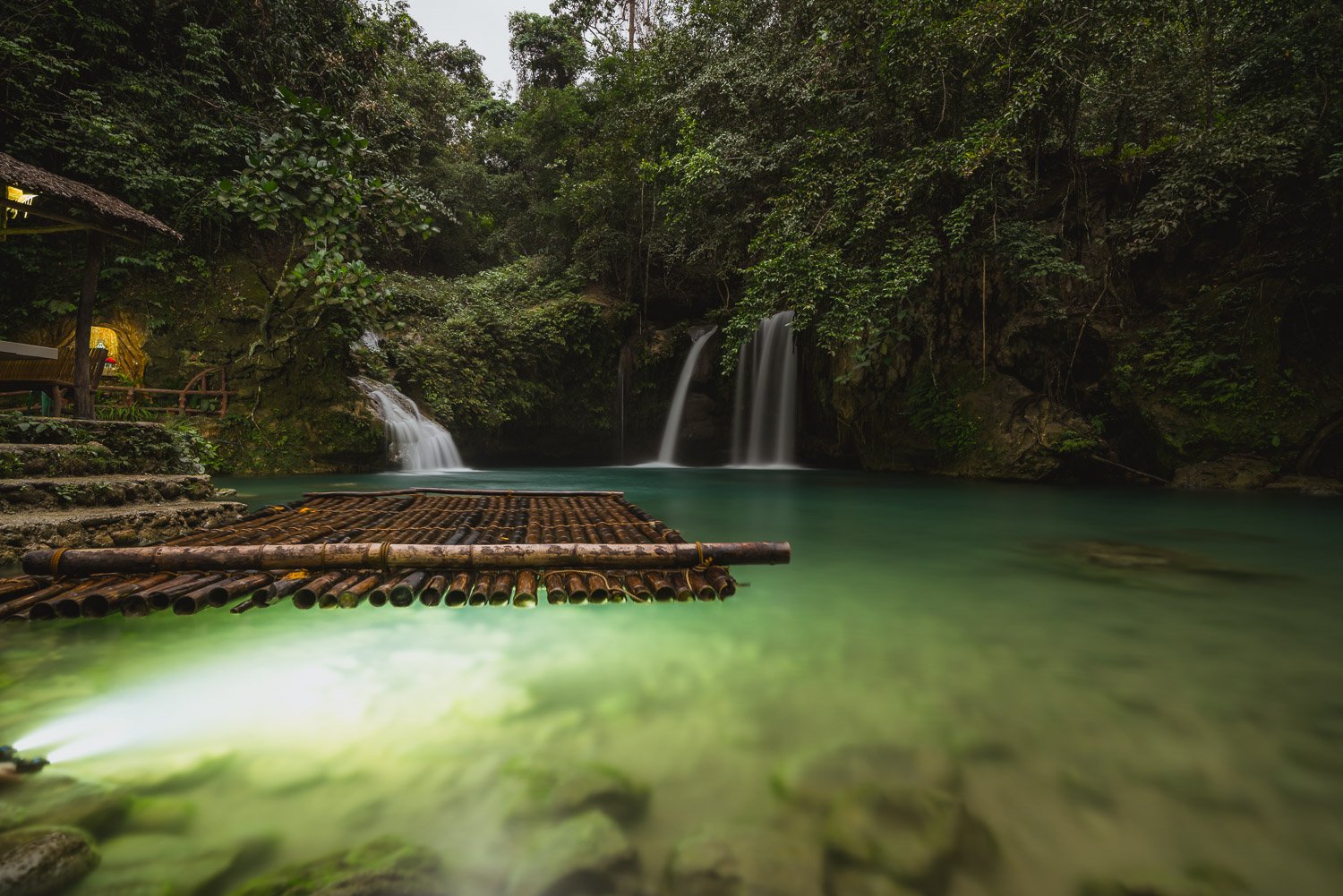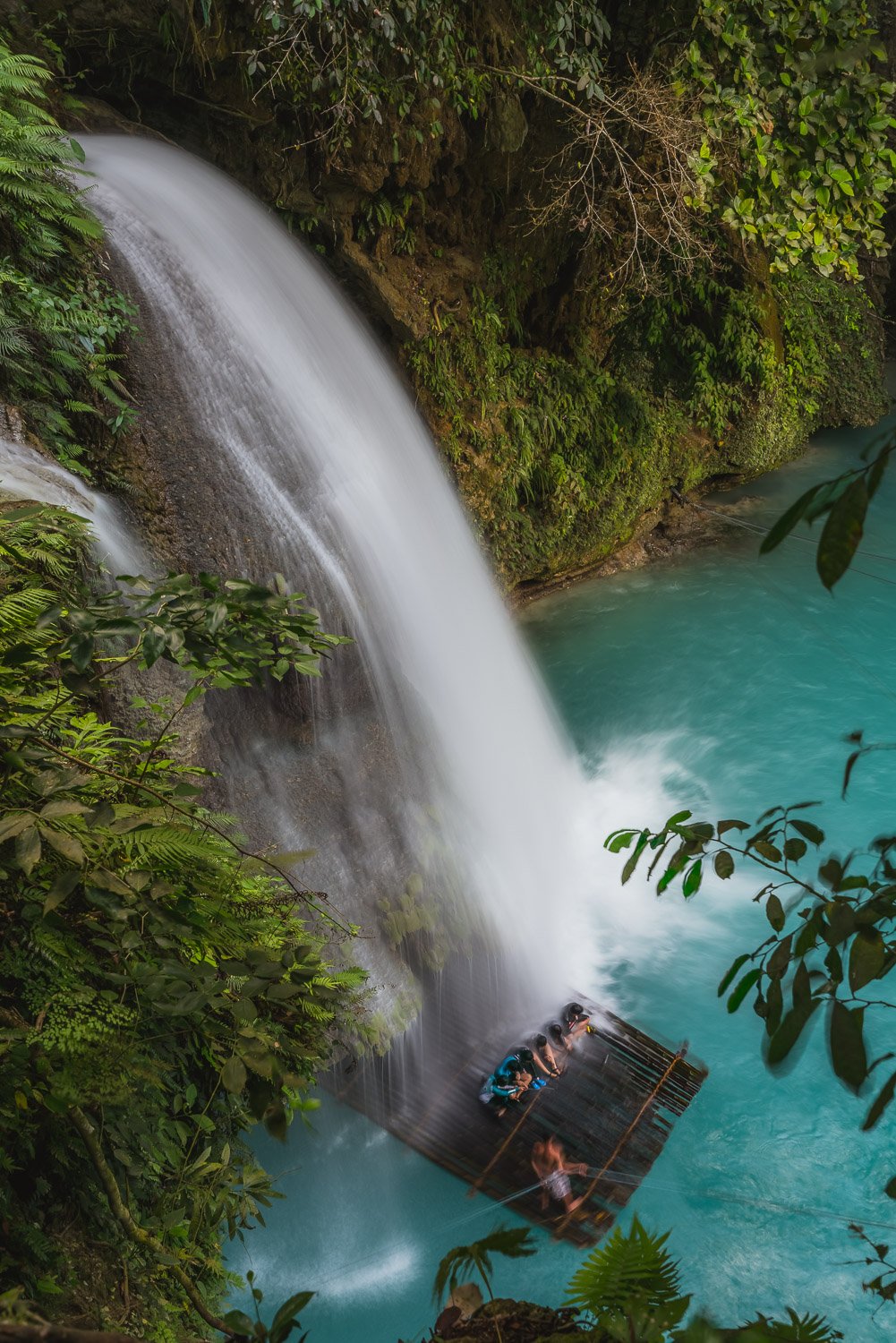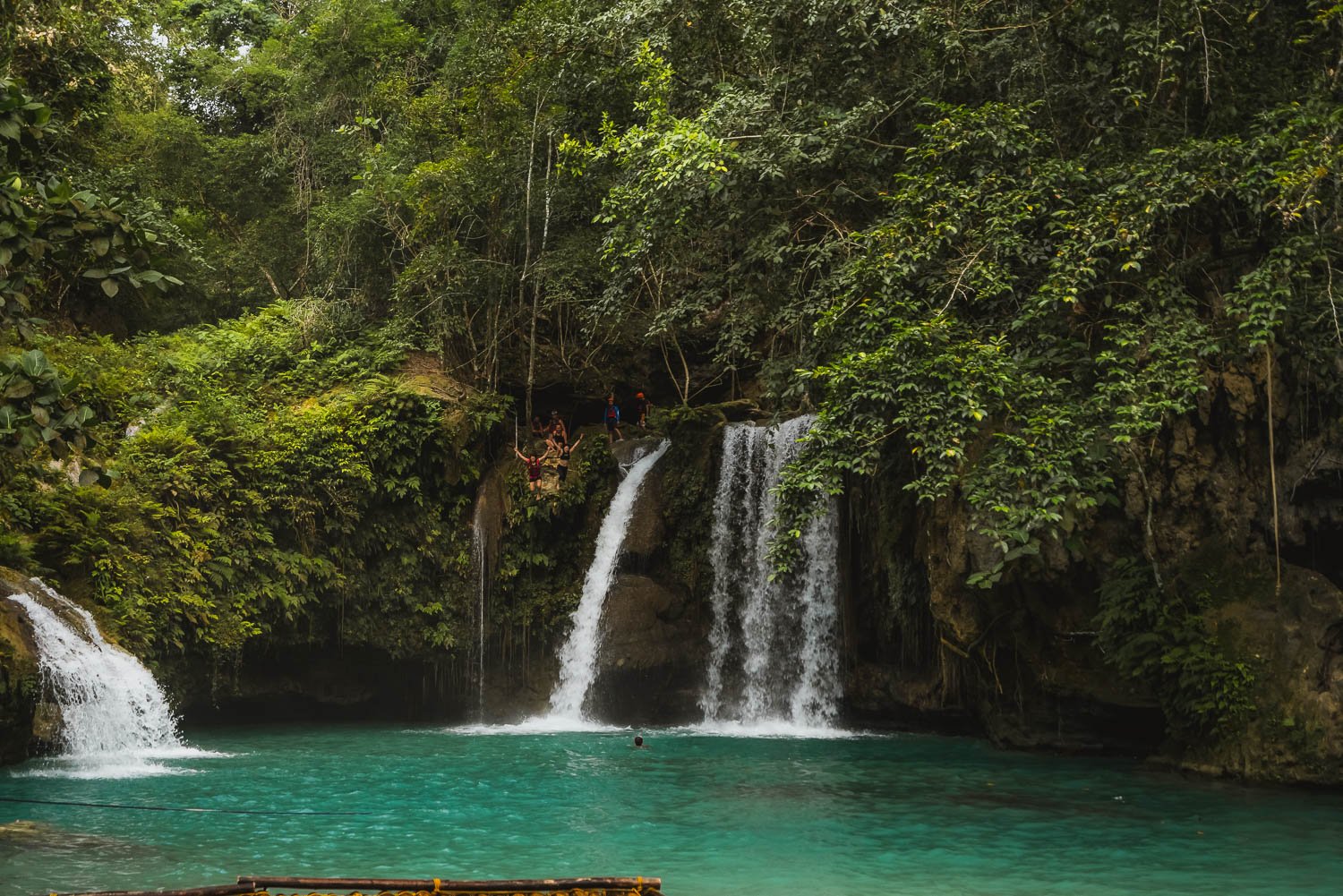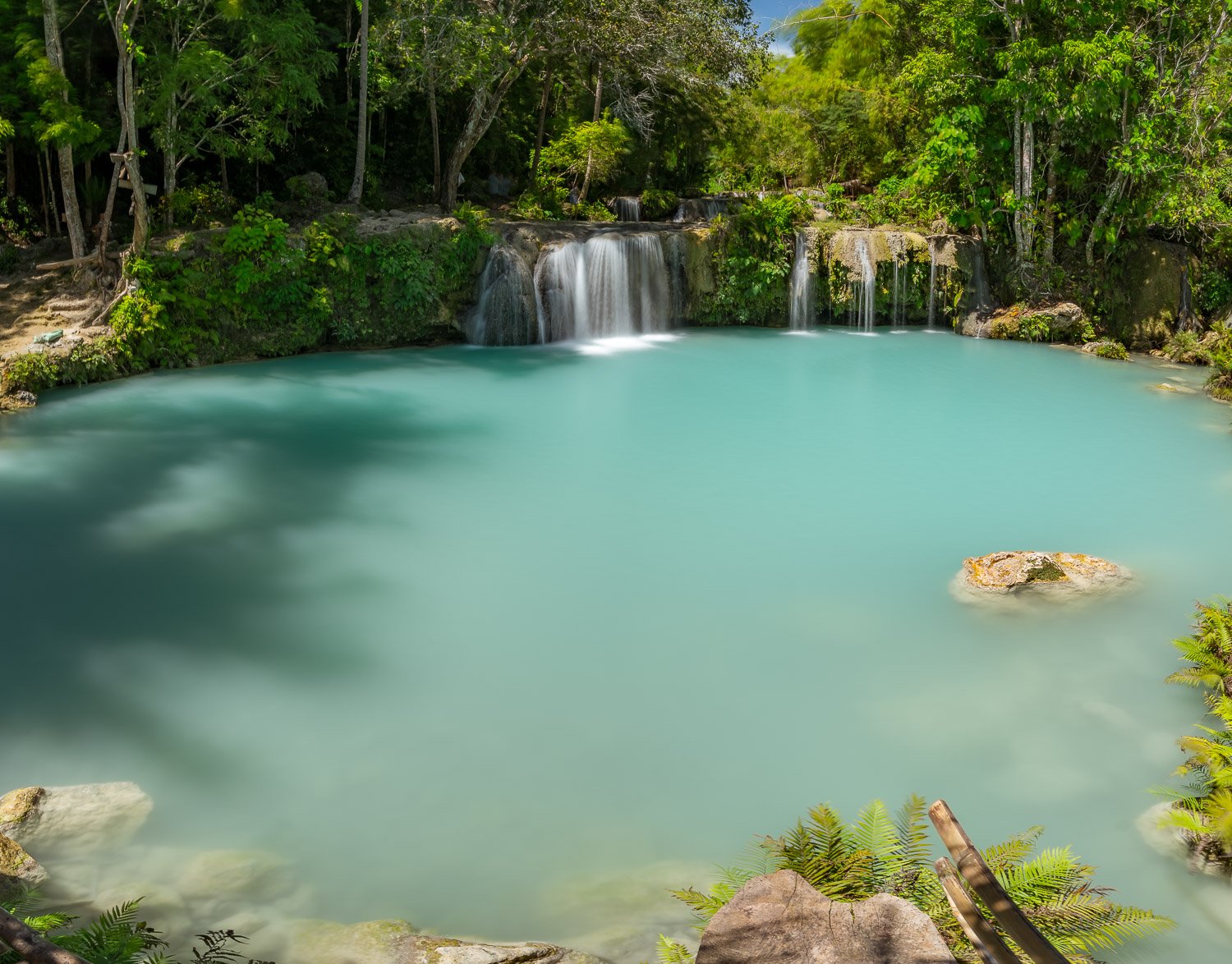Discover the Most Popular Destinations in the Philippines
Being a traveler, you might have heard of the magnificence of the Philippines being one of the most famous ecotourism destinations in Asia. It is not just a dream place for sustainable ecotourism travels, but also an ideal location for adventure seekers.
The country takes pride in its world-renowned places, fascinating island hopping spots, dive sites, waterfalls, volcanoes, and peaks that you would surely love to lay your eyes on. No doubt that six most popular destinations in the Philippines stole a spot, being UNESCO World Heritage Sites.
What are the UNESCO World Heritage Sites in the Philippines?
Not convinced? Listen up. UNESCO World Heritage Sites are landmarks and areas that are listed for its cultural, historical, or physical significance. These sites are legally protected by international treaties. There are around 1,092 World Heritage Sites all over the world as of July 2018. The Philippines boasts its 3 UNESCO - renowned cultural sites and 3 natural sites.
Aren’t sure which places to visit in the Philippines? Why not start exploring these world famous UNESCO destinations in the country?
-
What are the Natural sites to visit in the Philippines?
• Tubbataha Reef National Park
• Puerto Princesa Subterranean River National Park
• Mount Hamiguitan Wildlife Sanctuary -
What are the Cultural sites to visit in the Philippines?
• Banaue Rice Terraces
• Vigan Historic City, Ilocos Sur
• 4 Baroque Churches of the Philippines
What are the Top Beaches in the Philippines?
As you know, the Philippines comprises more than 7,600 islands with coastal towns and provinces. The beautiful crystal clear waters, pristine white-sand beaches, and rows of coconut trees on the beach shore, are few of the many amazing things that you can see in the country. In fact, paradise is a frequently used word to describe the top beaches of the Philippines.
Are you ready to go on an adventure? Booking an accommodation in the Philippines is simple and easy.
Top Beaches in the Philippines:
Alona Beach, Bohol
Anawangin Cove, San Antonio, Zambales
Baler Surfing Beach, Aurora
Bantayan Island, Cebu
Boracay Island, Aklan
Borawan Island, Padre Burgos, Quezon
Calaguas Island, Camarines Norte
Carabao Island, Romblon
Caramoan, Camarines Sur
Coron, Palawan
El Nido, Palawan
Honda Bay, Puerto Princesa, Palawan
Hundred Islands, Alaminos, Pangasinan
Islas de Gigantes, Iloilo
Magalawa Island, Zambales
Palaui Island, Cagayan Valley
Panglao Beach, Bohol
Patar Beach, Bolinao, Pangasinan
Potipot Island, Zambales
Samal Island, Davao City
Siargao Island, Surigao Del Norte
Saud Beach, Pagudpud, Ilocos Norte
Sumilon Island, Cebu
White Beach, Puerto Galera, Oriental Mindoro
White Island, Camiguin
Where are the Best Spots for Island Hopping in the Philippines?
Get amazed by the diversity of the Philippine islands, ranging from isles made of sand or limestone to vegetation-rich ones. This is why island hopping in the Philippines by a motorized boat or Bangka is a must-try. Don’t dare miss this experience when traveling in the Philippines.
As a first-time guest to the country, take note that the weather in the Philippines can be rough sometimes. So make sure to bring the necessities for seasickness during the trip.
Best Spots for Island Hopping in The Philippines:
Almeria, Biliran
Boracay, Aklan
Bulalacao, Oriental Mindoro
Burias Islands, Masbate
Calaguas, Camarines Norte
Camiguin, Mindanao
Caramoan, Camarines Sur
Coron, Palawan
Dinagat Islands, Mindanao
El Nido, Palawan
Honda Bay, Palawan
Hundred Islands, Pangasinan
Islas de Gigantes, Carles, Iloilo
Jordan, Guimaras
Matnog, Sorsogon
Nueva Valencia, Guimaras
Panglao Island, Bohol
Romblon, Romblon
Siargao, Surigao Del Norte
Tingloy, Batangas
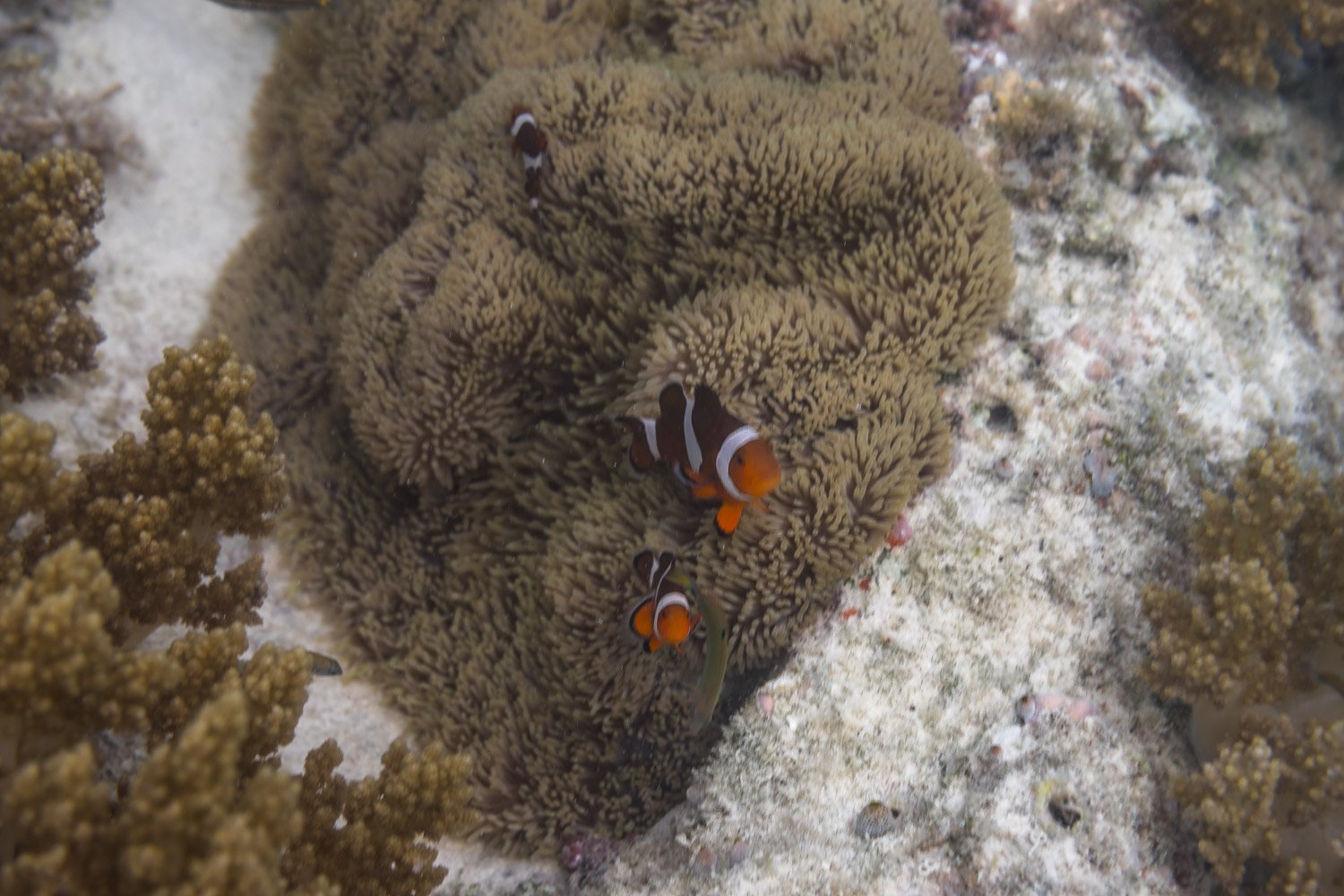

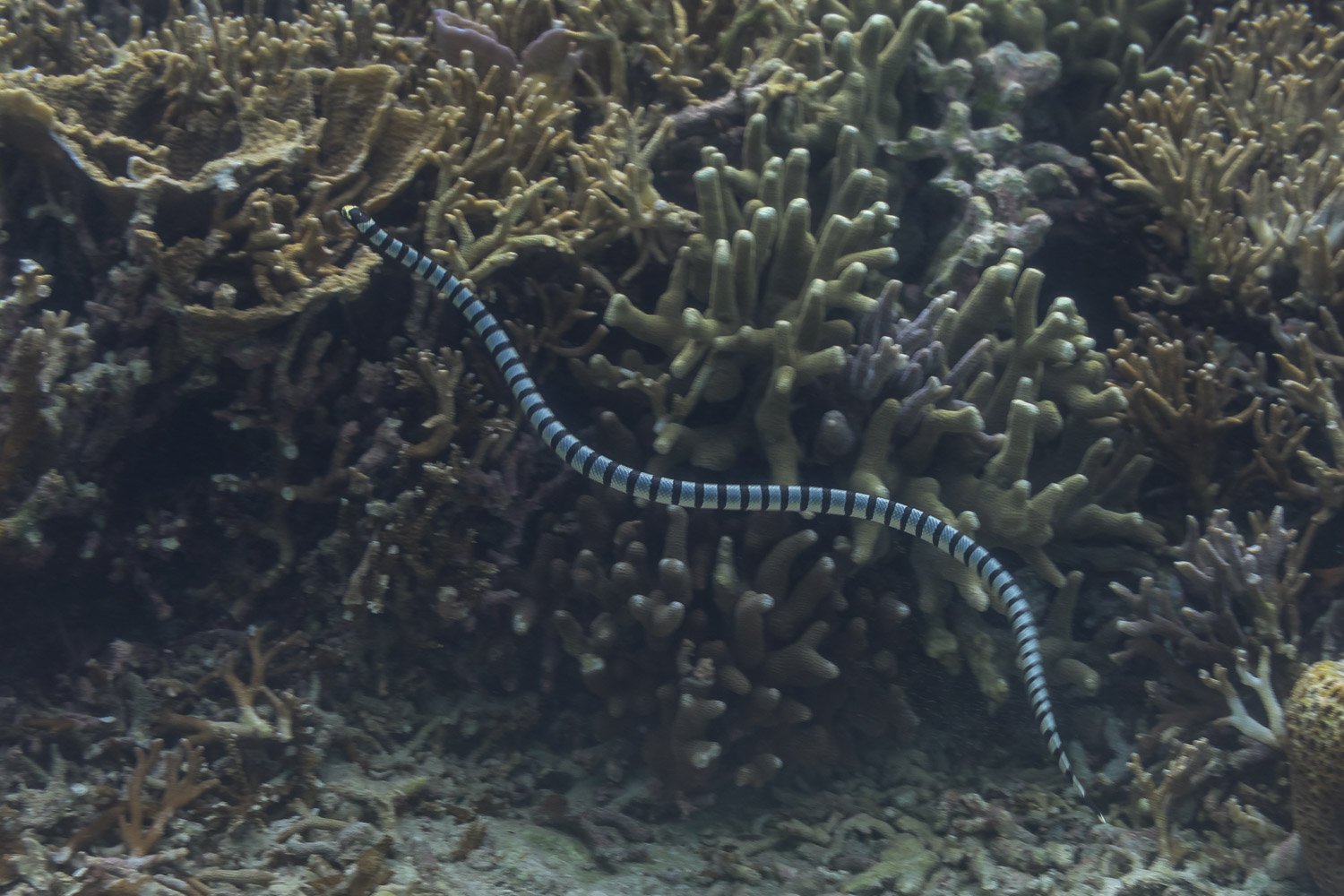
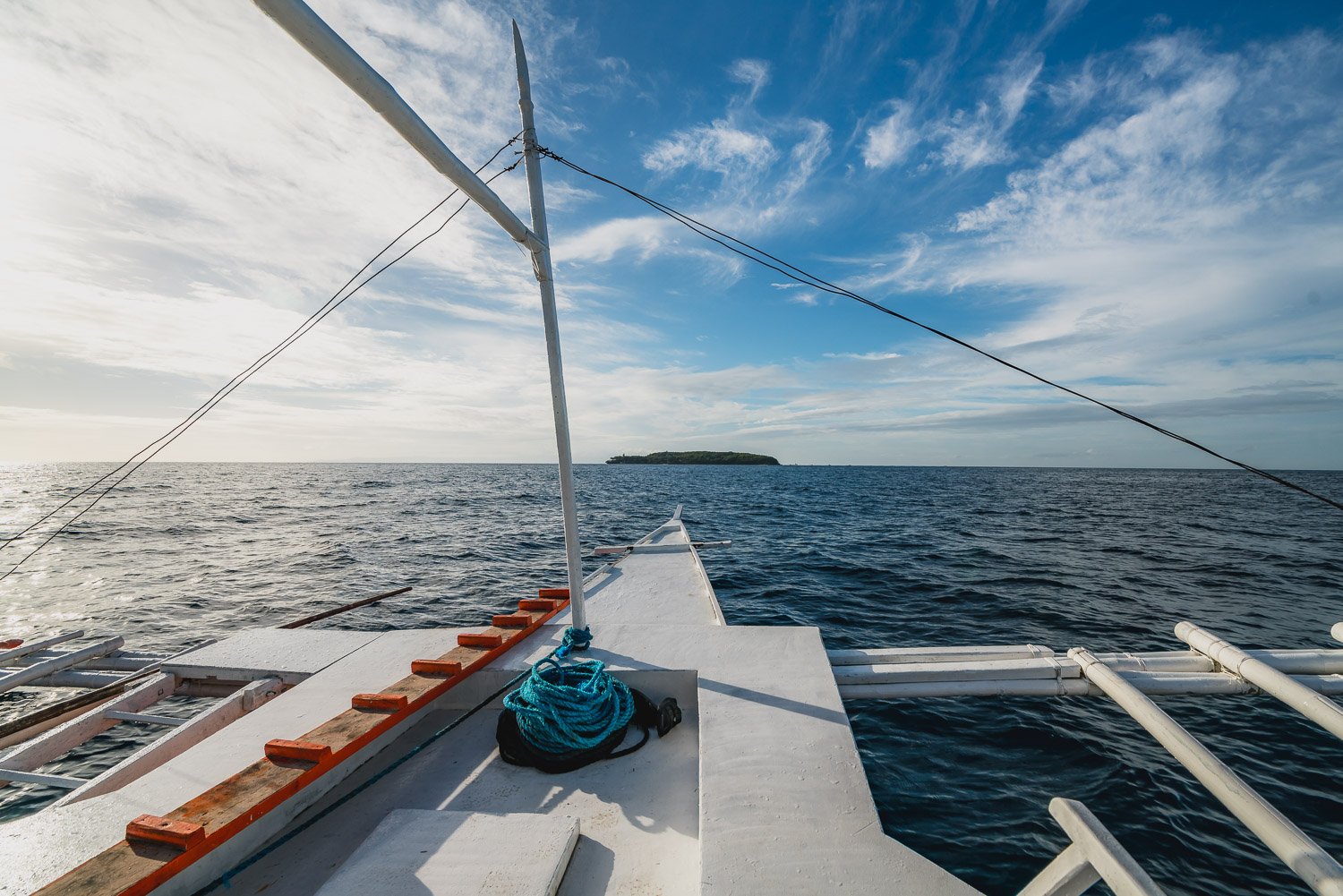
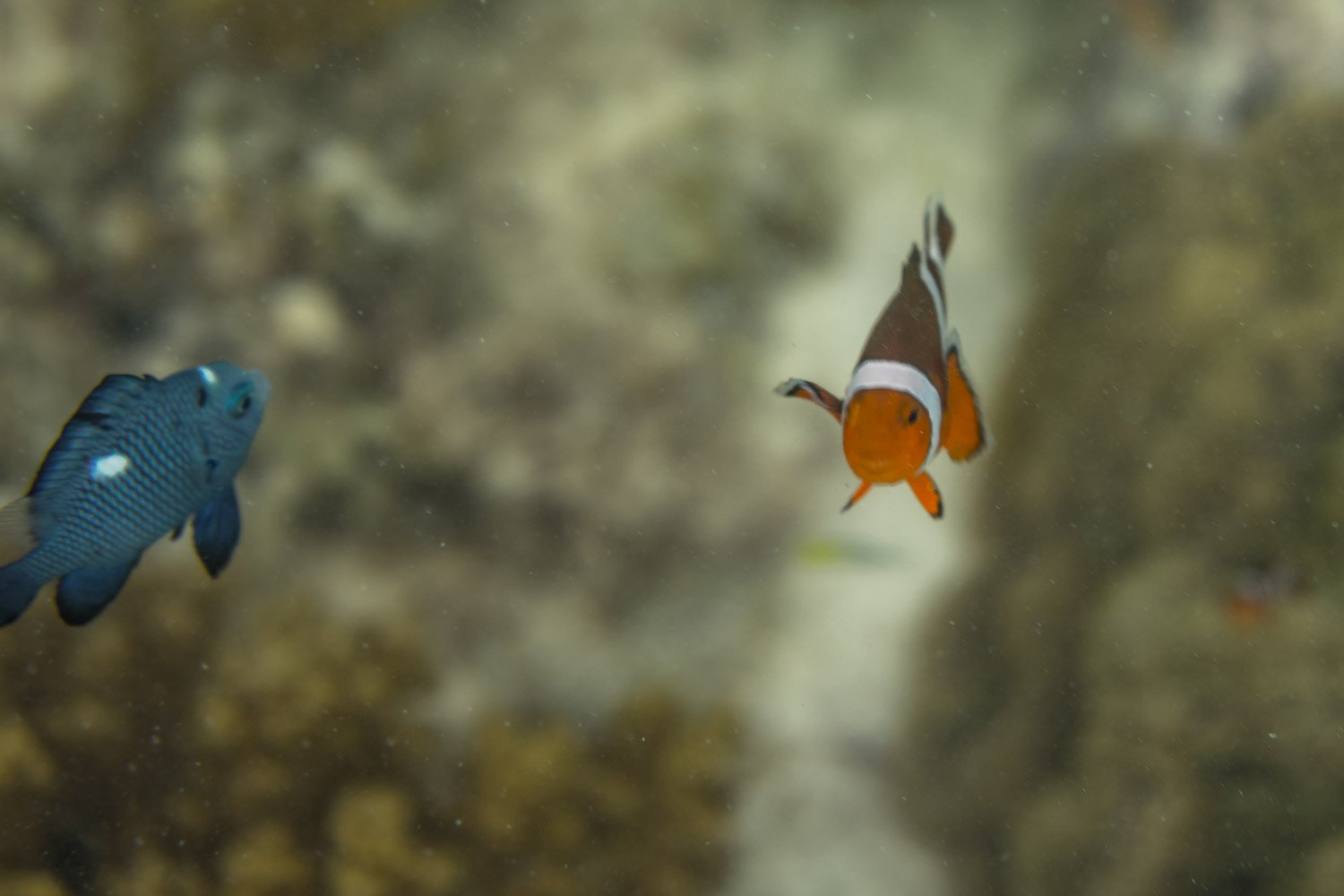
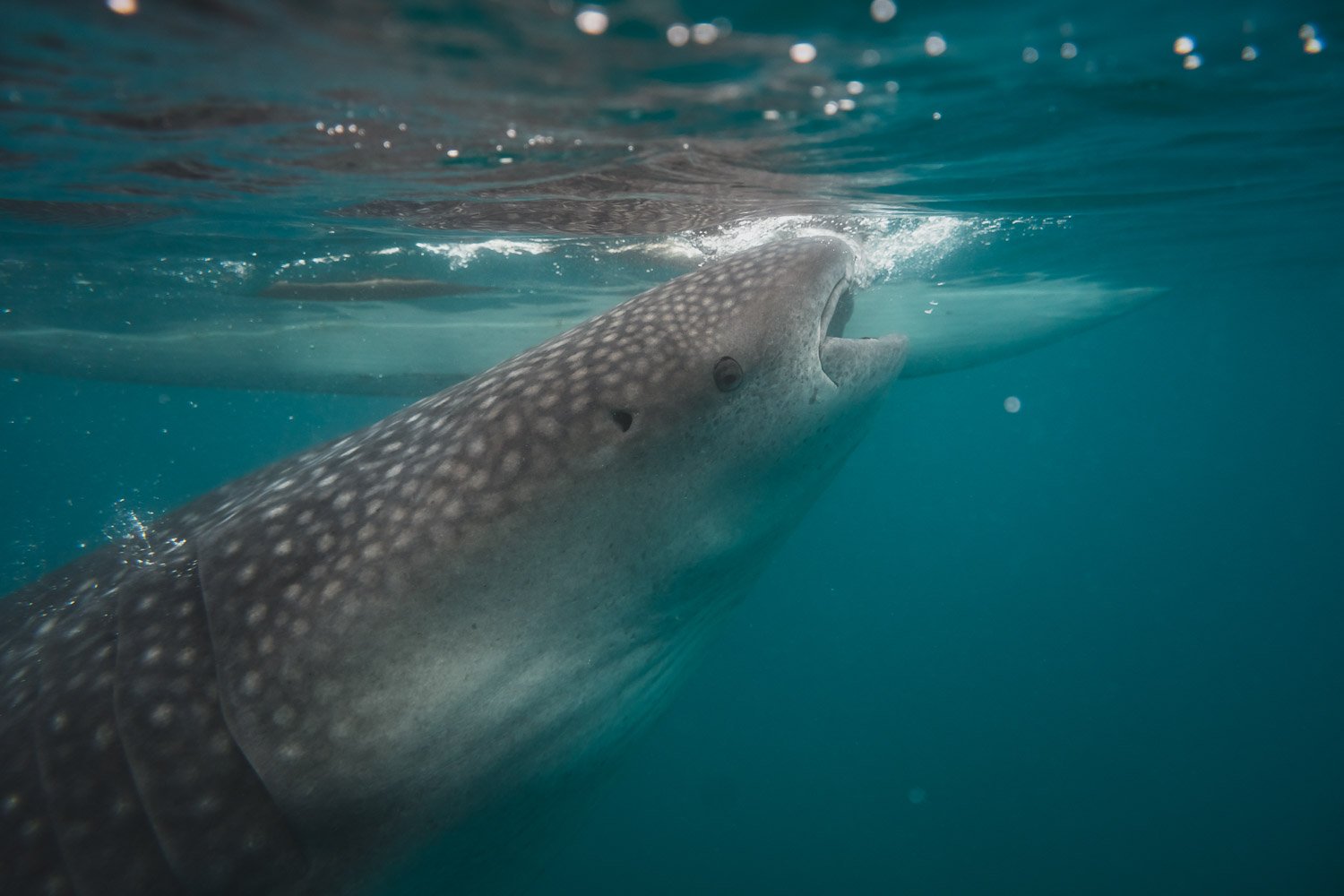
What are the Most Popular Dive Spots in the Philippines?
At this point, you might be excited to unveil the amazing underwater surprises that the Philippines beholds. Does a trip to the country’s beautiful reefs and unparalleled marine life sound interesting? Certainly it is. With more than 18,000 kilometers of shoreline, and approximately 27,000 square kilometers of coral reefs, a diving adventure in the Philippines is unforgettable.
-
Anilao, Batangas - Best for Underwater Photography
Anilao, Batangas Province in the island of Luzon, is a great diving spot in the Philippines. If you are into underwater photography, this is a real deal. Approximately 127 kilometers away from Metro Manila, many underwater photographers visit the place to capture beautiful images of ribbon eels, scorpion-fish, nudibranch and a lot more. Aside from that, there are other three popular diving spots in the province of Batangas, in the Southern part of Metro Manila that you would love to pay a visit to. These are namely:
• Anilao is a marine protected sanctuary in the town of Mabini, Batangas (Calabarzon Region). Ranked as the third best diving spot in Southeast Asia, it is famous for muck diving and underwater wildlife photography.
• Ligpo Island can be found in San Luis, Batangas, lying 120 kilometers south of Metro Manila. It is surrounded by must-see corals and rich sea life. Don’t dare miss the chance to dive into its cool waters and see the unique reel fish up-close.
• Sombrero Island is approximately 35 minutes away from Anilao, Batangas (Calabarzon Region) by a boat or a Bangka. Resembling a Mexican hat or “sombrero”, this small island is a diving spot of around 100 meters deep and features a huge reef wall extending beyond the limit. The line of beautiful and multi-colored corals, gorgonians, and sponges can charm divers. -
Apo Reef Natural Park - Most Popular Dive Sites in the Philippines
Do you want to lay eyes on over a hundred species of corals? If so, lend an ear. Apo Reef is a fantastic diving spot that lies between the islands of Coron and Mindoro in MIMAROPA Region. As the world’s second largest marine reserve, it is a refuge for stingrays, gray reef sharks, hammerheads, threshers, manta rays, whitetips, blacktips, and many others. Surrounding the Apo Reef Natural Park are the 3 uninhabited islands that you should also explore:
• Apo Island is a volcanic island that is around 74 kilometers. Situated 7 kilometers away from Negros Island and south of Dumaguete, Negros Oriental Province, this marine reserve is put under the care of the Protected Area Management Board (PAMB) in the Philippines.
• Binangaan Island is located in Mindoro Occidental, northwest end of the Island of Cebu. Also known as Apo Menor, it is a rocky island made of limestone with very little vegetation.
• Cayos del Bajo is an island in Sablayan, in the Province of Occidental Mindoro. It is home to a flat coralline rock formation with no existing vegetation on the lagoon near the eastern edge of the reef. This island has an area of approximately 34 square kilometers, and is protected by the Sablayan Department of Environment and Natural Resources.Apo Reef National Park is one of the most popular dive sites in the Philippines. This is why many divers come to the Occidental Mindoro province to experience the seemingly surreal underwater world, and book an accommodation in one of its many hotels and resorts.
Accommodations in Pandan Island or the Sablayan mainland are popular among divers because of the availability of trusted dive operators to book a tour from.
You might be wondering about the best time to come for a dive in the largest dive spot in the Philippines. Here’s the catch. As long as the sea is calm, Apo Reef Natural Park is at its best during the months of April, May, October, and November.
As one of the crown jewels of tourism in the Philippines, Apo Reef is listed as a tentative UNESCO World Heritage Site. This means authorizing the Philippine Tourism Authority (PTA) to undertake the development and management of the area.
-
Boracay Island - Ideal Dive Site for Beginner in the Philippines
Another popular tourist destination in the Philippines is Boracay. This charming adventure spot lets you experience the abundance of marine life in the country. On top of being a famous island-hopping destination, Boracay is a perfect location for newbie divers. Sounds fun? Yes, it definitely it is.
It is also good to note that there are reputable diving schools in this area that provide PADI licensing for both local and foreign guests.
Located in the town of Yapak, Southeast of Boracay Island Western Visayas, Yapak Beach is a diving destination in the Philippines that is rated 5 stars among tourists. Diving at Yapak Beach is a must-try. Don’t dare miss a close encounter with tuna, rays, and sharks swimming along effortlessly with the current. Smaller creatures like pygmy seahorses and nudibranch can be seen living amongst the corals too.
-
Bohol - Best for Novice or Experienced Divers in the Philippines
Whether you are an experienced diver or a newbie, you can see plenty of diving spots in Bohol. Its rich marine life is home to exquisite corals, seahorses, manta rays, hammerhead sharks, sea snakes, turtles, and dolphins. Here are some Bohol dive sites that you might want to include in your itinerary.
•Alona Beach
• Arco Point
• Balicasag Island
• Cabilao Island
• Pamilacan IslandAlthough the most famous are still Alona Beach, Pamilacan and Balicasag, however, all the above-listed dive sites have captivating underwater life. Give them a try, will you? Bear in mind that the best time to dive at these spots is from November to May.
-
Coron Bay, Palawan - Popular for Japanese Shipwrecks Diving
Coron Bay is one of the best diving sites in the Philippines, where divers encounter lionfish, scorpionfish, and schools of large batfish.
Seeing the wrecks of the historic sunken ships lying across the ocean floor is the highlight of Coron diving and adventure. The most popular World War II Japanese shipwrecks are the Olympia Maru, Akitsushima, Kagyu Maru, and Okikawa Maru.
Note: December to March is the best time to dive because the water visibility is at its best during these months.
-
El Nido, Palawan - Best Diving Destinations in the Philippines
Have you heard of El Nido before? El Nido is one of the best diving destinations in the Philippines that can surely bring you into an adventure like no other. Note that the best time for diving in this wonderful spot is from March to May, as long as the currents are mild and calm. You are lucky if you get the chance to explore the amazing diving adventures in El Nido, namely:
• Dilumacad Tunnel has several ceiling holes. The stunning beauty of Soft Coral, Lionfish, Moray Eel, etc. awaits you inside the tunnel.
• Paglugaban Cave has an underwater forest with amazing Soft Corals and incredible rock formation.
• South Miniloc has beautiful shallow water, coral gardens, and a colorful variety of reef fishes visible in crystal clear waters.Isn’t it awesome to catch a sight of approximately 100 kinds of stunning corals, staggering limestone cliffs, turtles and more than 800 species of fish in this area? Remember, El Nido is a perfect adventure spot for beginners and experienced divers, and the most popular island-hopping destination in the Philippines.
-
Malapascua Island, Cebu - Home of the Rare Thresher Sharks
This charming and famous diving island in the Philippines is located in the northern part of Cebu. It has one of the best beaches in the country. The entire area is well-maintained and surrounded by many gorgeous dive sites in the Philippines.
Lying close to the village of Malapascua, the Monad Shoal is a world-famous site for adventure where manta rays, thresher sharks, eagle rays, and hammerheads are spotted. It is believed to be the only place on the planet where Thresher Sharks can be seen swimming every day.
For these reasons, the local government and non-government organizations ensure that environmental laws are observed. These agencies work together to protect Malapascua Island’s natural resources.
Planning to visit the island? Have it somewhere between December to April because it is the best time to come and dive. During these months, the weather is good, so expect high tourist visits. Discover Cebu City travel guide: Philippines top tourist sites destination, know where to stay, what local delicacies to try, and what activities to do.
-
Puerto Princesa, Palawan - Top Diving Spots in the Philippines
The good news does not end there because there are many great diving spots around Puerto Princesa that stretch towards the Sulu Sea. One of them is Honda Bay, where you can see sea turtles, white-spotted eagle rays, manta rays, and stingrays.
The sustainable preservation of natural resources through ecotourism practice in Puerto Princesa, Palawan, located in western Philippines, makes Puerto Princesa one of the top adventure and diving spots in the Philippines.
Just like many divers who came to experience Puerto Princesa’s abundant marine life, you will love to meet them in the eye. The white-sanded beaches are irresistible. Numerous dive shops operate in Puerto Princesa provide a full range of dive courses, equipment rental, and guiding for inexperienced divers. If you happen to be in this category, you don’t have to worry! May to November are the perfect times to explore Puerto Princesa and islands in Honda Bay. -
Puerto Galera, Oriental Mindoro Province - Suitable for Different Levels of Diving
Puerto Galera in Mindoro Island (MIMAROPA Region) is famous for its long- stretched beautiful white sand beaches, natural seawall, exciting dive sites, and lush mountains. Verde Island has most of the sites with dive shops that offer gear rental and divemaster for hire.
It has plenty of amazing dive sites for newbies and veterans. From April to September, you can relish the great visibility of the beautiful reefs, thriving marine life and colorful species like crabs, shrimps, and sea anemones. Fantastic, right?
-
Romblon - Dive in the Famous Spot Blue Hole
Looking forward to a rustic feel in a lovely province? Pack for a Romblon adventure! Lying east of Mindoro and west of Masbate, Romblon in the region of MIMAROPA (Mindoro, Marinduque, Romblon, Palawan) is an island province that has one of the most interesting adventure and diving spots in the Philippines. Romblon is distant and homely, making it perfect for a diver who is not afraid to trek on the astonishing beauty hidden beneath the Sibuyan Sea (province of Romblon).
October to June is the best time to visit Romblon for a dive because the possibility of a heavy rainfall is less. Start the day by an early morning sight of the varieties of fish, large shoals, and tiger shrimps. Although whale shark encounters are rare, these friendly giants are noticeable from April to June.
Perhaps the most intriguing part of diving in Romblon is the famous Blue Hole. It is a chimney of corals and a home to groupers, crabs, lobsters and sea snakes (Walo-walo as it is called in Cebuano).
-
Sorsogon, Bicol Region - Dive with the Whale Shark (Butanding)
Lying south of the main Island of Luzon, the main diving sites in the Bicol Region can be found off the coast of Bulan in the Ticao Pass, Sorsogon. The popular dive site is called Manta Bowl Shoal. Spotted here are Manta rays, multi-colored coral reefs, and different types of marine life.
The most ideal time to visit Sorsogon is between December and May. You will get a chance to snorkel with the gentle giants, “Whale Sharks”, locally known as Butanding. Whale sharks are generally not harmful and dangerous to humans. In fact, they are seen to lure around the area with divers. But, this activity is highly regulated by the local Department of Tourism (DOT) through its local office in Donsol.
-
Tubbataha Reefs Natural Park - The Best Diving Site in the Philippines
Go see Tubbataha Reef for another stunning adventure to the Philippines. This famous diving site is also renowned as one of the world’s best sites to explore. It has a spectacular wall of pristine coral reefs that goes more or less 100 meters long. It is densely populated with endless varieties of marine species, has two coral islands, and intricate lagoons.
This UNESCO World Heritage Site is located approximately 181 kilometers Southeast off the coast of Puerto Princesa City, Palawan, specifically in the middle of the Sulu Sea. Because of Tubbataha Reef's location, it will take around 10 hours from Puerto Princesa to reach it.
Here, you’ll get a glimpse of the colorful reef fish thriving in the corals, and notice sharks and whales dominating the drop-offs to the ocean. Meanwhile, native sea turtles and birds nest on its northern inlet. It is incredible to note that the Tubbataha Protected Area Management Board (TPAMB) protects this area from ship navigation, marine pollution, and fishing.
Here’s a heads-up! Due to strong ocean currents, diving in Tubbataha Reef is not recommended for beginners, and it may only be accessible by a licensed and reliable tour operator Liveaboard. The demand is quite high during the dive season, particularly from July to October. So, it is always advised to book your Philippines dive trips ahead of time.
Make sure to check out our page on Safety While Traveling In The Philippines for a more enjoyable, fulfilling, and safer adventure in the Philippines.
What are the Best Surfing Spots in the Philippines?
If you are looking for the best adventure at the pristine beaches and breathtaking spots in the Philippines, surfing is a must-try. Take a pick at the best surfing spots in the Philippines listed below.
-
Baler, Aurora - A Popular Surfing Destination for Locals
Have you watched the movie “Apocalypse Now”? After being featured in this Hollywood film, Baler became famous. It is a beautiful, unexploited coastal town in the Sierra Madre Mountains of Northeastern Luzon that is located approximately 272 kilometers away from Metro Manila. Catch the best waves in this popular surfing destination in the Philippines between December and February and witness the yearly Aurora Surfing Cup in September.
-
Catanduanes, Bicol Region - Ideal for Beginners and Advanced Surfers
Known as “Land of the Howling Winds”, Catanduanes is an island province that experiences typhoons like no other province. Located on the eastern coast of the Bicol peninsula, the beachfront in the town of Baras Catanduanes is a perfect spot to surf as it faces the Pacific Ocean. Strong Pacific winds have given it swells (big waves) especially between November and February, making it ideal for both beginners and advanced surfers.
-
Daet, Camarines Norte, Bicol Region - Surfing Capital in the Bicol Region
One of the most recommended surfing sites in the Philippines is Daet, Camarines Norte, Bicol Region. This tourist surfing destination is located in the coastal area of Bagasbas Village (or barangay in Tagalog). Between August and November, the swells (big waves) in this area can reach up to 8 feet high.
The coastline of Bagasbas officially earns its title as “surfing capital in the Bicol Region” because of its giant waves and fine gray sand that stretches up to around 3 kilometers.
-
San Juan, La Union - Suitable for Beginners and Skilled Surfers
You don’t have to travel far from Metro Manila just to get a taste of the Philippines’ one of the best surfing destinations. Plan an adventure surfing to San Juan, La Union, located around 277 kilometers north of Metro Manila. This coastal province offers surfing areas for beginners as well as ideal adventure spots for the skilled surfers. With its short distance from Metro Manila, this is a popular surf stop for adventure surfers.
The best time to surf is from October until March, when the north swell (big waves) starts. Meanwhile, the south swell is between May and August.
-
Siargao Island, Surigao del Norte - Surfing Capital of the Philippines
Experience the adored surfing paradise when you visit the surfing capital of the Philippines, Siargao. It is located approximately 800 kilometers southeast of Manila. Siargao Island sits just off the Pacific coast of the northeastern part of Mindanao.
Surfing in Siargao Island is best enjoyed from July to November since strong waves are constant during these months. The powerful waves at “Cloud 9” are consistently recognised as one of the world’s 5 toughest breaks, and are frequently compared to the famous strong surf of Hawaii, California, and Australia. The Cloud 9 Event, held each September and sponsored by Billabong, draws the biggest names in surfing from around the world.
-
Palawan, MIMAROPA Region - Ideal for Surfing and KiteSurfing
Enjoy the best water sports adventure like surfing and kite-surfing in the most beautiful island of Palawan in the western Philippines. Facing towards the Sulu Sea, the best wind for kite-surfing is between November and April.
Kite surf at Sibaltan, Northeast of Palawan from November to May and feel the strong wind blowing from the northeast side of the island. Duli Beach is another must-visit Palawan adventure destination, close to El Nido and Nagtabon with around 50 minutes drive from Puerto Princesa.
The swell (big waves) is pretty consistent from November until April. For more adventurous and advanced surfers, there is a lot to explore in this pleasurable island.
For more information, get in touch with us about surfing and kiting in Palawan. -
Zambales Province - Popular Surf Spot Nearby Manila
Popular for its long shoreline facing the South China Sea, Zambales is located on the west coast of Luzon, North of Manila. Waves in Zambales Province are most even from May to late November.
The entire shoreline of this province offers many surf spots for local and international surfers. Not just that, it also gives many possible surfing breaks that you would surely enjoy.
The towns of San Narciso, San Antonio, and Pundaquit are must-visits when planning a surfing trip in the Philippines.
What are the Highest Mountain Climbs in the Philippines?
With its majestic mountains and staggering landscapes, you would never miss out an exhilarating hike in the Philippines. Trekking and hiking are the most recommended activities when going on holiday in the Philippines.
Looking for adventure in the highlands? Visit Mt. Pinatubo, an active volcano located in the boundary of Zambales, Pampanga, and Tarlac in Central Luzon. The drive to the jump-off point of Mt. Pinatubo from Manila takes about 3 hours.
The majestic Mt. Pulag is also a stunning peak in Luzon that you should pay a visit to. In fact, it is considered one of the most beautiful mountains in the Philippines. The mountain ground in northern Luzon, the Cordilleras, is a perfect area for hiking and exploration.
You’ll see that surrounding these stunning mountains are the world-famous rice terraces of the native Igorot people. This region’s native traditions and delicious food are unique and truly unforgettable. Give it a try.
Looking for trekking adventures in the Cordillera Mountains? Get in touch with us here, for we are experts in this field.
Check these most notable places for adventure, trekking, and camping which can be included in the itinerary.
-
Mt. Apo - The Highest Mountain in the Philippines
Trek on the highest mountain in the Philippines, Mt. Apo. With an elevation of around 3,000 meters above sea level, it is considered as one of the richest botanical mountains in Davao Region. It hosts hundreds of rare and endemic flora species. Located on the island of Mindanao in the south, Mt. Apo is also home to the Philippine eagle, one of the world’s largest eagle species.
If you are planning to go trekking, the Kidapawan trail is the nearest and easiest way to reach the peaks of Mount Apo, which takes about 2 days depending on the trail.
Planning to visit Mindanao? It is perfect to know that other places in Mindanao are very safe for tourists, since it is presently free from conflict.
-
Mt. Dulang-Dulang - 2nd Highest Mountain in the Philippines
Fondly called “D2” by local mountaineers, Mt. Dulang-Dulang is the second-highest mountain in the Philippines. It is one of the highest peaks in the Kitanglad mountain range, and has an altitude of around 3,000 meters above sea level. It is located in the north-central portion of the Bukidnon province, Mindanao.
-
Mt. Pulag - 3rd Highest Mountain in the Philippines
Sitting at an elevation of around 3,000 meters above sea level, Mt. Pulag of the Cordillera Range, is the third highest mountain in the Philippines. This is where you can see the magical sunrise slowly showing up from the horizon.
Located in Benguet, in the northern part of Luzon, this mountain is home to dwarf bamboos and four species of cloud rats, slow-moving herbivores that can only be found in this particular area.
Mt. Pulag is well-known to local outdoor enthusiasts and adventurers for its scenic "Sea of Clouds”, which can be seen from its summit. Quite an interesting view, isn’t it?
-
Mt. Kitanglad - 4th Highest Mountain in the Philippines
Mt. Kitanglad is an inactive volcano, and a part of the Kitanglad Mountain Range in the province of Bukidnon, Mindanao Island. It has an approximate height of 2,900 meters above sea level, and is considered the fourth highest mountain in the Philippines.
-
Mt. Kalatungan - 5th Highest Peak in the Philippines
Mt. Kalatungan, also referred to as Catatungan, is the fifth highest peak in the Philippines. Its elevation of around 2,900 meters above sea level makes it a stunning adventure and trekking destination that you might want to include in your itinerary. It is a stratovolcano located in Valencia, province of Bukidnon, in the Northern Mindanao Region.
-
Mt. Tabayoc - 6th Highest Mountain in the Philippines
Mt. Tabayoc sits at an altitude of more or less 2,800 meters above sea level. It is the second-highest mountain in Luzon, and sixth in the Philippines. Situated in Kabayan, Benguet, Cordillera Mountain Ranges, locals call it Tabayac or Tabeyoc (which means basin). The driving distance from Manila to Benguet is about 6 hours.
-
Mt. Ragang - 7th Highest Mountain in the Philippines
A stratovolcano located on Mindanao Island, Mt. Ragang is known by the locals as Mount Piapayungan or Blue Mountain. It is the seventh highest mountain in the Philippines, with a height of around 2,800 meters above sea level.
Mt. Ragang is located on the boundary of Lanao del Sur and Cotabato provinces in the Autonomous Region of Muslim Mindanao (ARMM).
-
Mt. Maagnaw - 8th Highest Mountain in the Philippines
Mt. Maagnaw is the eighth highest mountain in the Philippines with a standing height of around 2,700 meters above sea level. It towers in the Kitanglad mountain range in Bukidnon in the Northern Mindanao Region. Expect a breathtaking view upon reaching the summit.
-
Mt. Singakalsa - 9th highest mountain in the Philippines
Also known as Mt. Timbak, this mountain stands more or less 2,700 meters above sea level which makes it the 9th highest mountain in the Philippines, and the 3rd highest in Luzon. Mt. Singakalsa is part of the Cordillera Mountain range, and is located in the province of Benguet.
Have you heard of Timbak mummies? This mountain is believed to be a home of such mummies that were first created by the Ibaloi tribe, an Indigenous ethnic group that lives in the mountainous area of Northern Luzon. For a more interesting sight of Benguet, pay a visit to magnificent Banaue rice terraces.
-
Mt. Kalawitan- 10th Highest Mountain in the Philippines
This mountain borders the towns of Bontoc and Sabangan in Mountain Province and Tinoc in Ifugao Province, North of Luzon. Mt. Kalawitan is the 10th highest mountain in the Philippines.
Towering around 1,700 meters above sea level, its beauty is highlighted by pines and mossy forests, including the breathtaking view from its summit. Another interesting thing that you can do is visit the most scenic destination in the Philippines, Buscalan situated within the Cordillera Administrative Region.
What are the Most Popular Active Volcanoes of the Philippines?
Do you know that there are approximately 70 volcanoes in the Philippines? Some of which are still regarded as active. Pinatubo, Mayon, and Taal are the most popular active volcanoes that are constantly monitored by the government.
Due to the geographical position of the Philippines in the "Pacific Ring of Fire", it becomes one of the countries in the world with the most active volcanoes.
For this reason, the Philippine Institute of Volcanology and Seismology (PHIVOLCS) dedicates itself to providing information and supervising the activities of volcanoes, earthquakes, and tsunamis.
3 Famous Active Volcanoes in the Philippines
-
Located in Zambales Province in Central Luzon, this volcano recorded the second-largest volcanic eruption of the 20th century, as it reawakened in 1991. It was a historic eruption, with gases and ash reaching high into the atmosphere and spreading around the earth.
This world-famous volcano is also one of the top tourist destinations in the Philippines. Here is a guide on how to visit Mt. Pinatubo.
-
Situated in Albay, in the Bicol Region in Southeast Luzon, Mayon is the most active volcano in the Philippines. It recorded 50 historical eruptions, with 2012 being the last. Renowned for its "perfect cone" shape, this is the most beautiful volcano on earth.
You can go for a walk on the base of the Mayon Volcano to see its beauty up-close. However, PHIVOLCS strongly recommends prohibiting entry into the 6-kilometer radius, known as the Permanent Danger Zone (PDZ) and the 7-kilometer radius known as the Extended Danger Zone (EDZ).
-
Located in Batangas Province of CALABARZON (Cavite, Laguna, Batangas, Rizal, and Quezon Provinces) Region in the south of Luzon, Mount Taal might look very small and faint but it is the second most active volcano in the Philippines.
With around 30 historical eruptions since 1572, this beautiful caldera volcano is known for its serene lake. Caldera is a volcanic crater that is formed by the collapse or explosion of the volcano itself. The most recent major eruption happened on January 12, 2020.
Taal Volcano is around 50 kilometers south of Manila, the capital of the Philippines, which is why it became a popular adventure getaway for locals.
Here is the complete list of active volcanoes in the Philippines and their location.
What are the Most Beautiful Waterfalls in the Philippines?
It is incredible to discover many popular waterfalls in the Philippines that are accessible by foot or by motorbike. To sustain the beauty of the environment, the government regulates tourist visits by allowing only guided trekking and requiring a minimum entrance fee of PHP 50 or USD 1 to most of these waterfalls.
-
Aguinid Falls - Samboan, Cebu, Philippines
Aguinid Falls is located in Samboan, Cebu in Central Visayas Region. It is a waterfall that can only be explored with a tour guide. Tourists can hire local guides and enjoy upstream river trekking, swimming, and cliff jumping. Taking pictures is a must-do.
Explore the few small caves inside and go for a refreshing dip. The best time to visit Aguinid Falls is between July and October because the water flow during these months is in full blast.
Note: To avoid huge crowds of tourists visiting the waterfall and to enjoy its spectacular beauty, explore this nature’s gift early in the morning.
-
Aliwagwag Falls - Cateel Road, Davao Oriental, Philippines
As the highest waterfall in the Philippines, Aliwagwag is a popular place to visit among local and international tourists. It sits at approximately 340 meters and consists of more than 130 tiers of cascading waterfalls.
As an adventure seeker, make sure to stop by Aliwagwag Falls at any time of the year. On a low budget trip, you can enjoy the cool waters and intriguing sights of the waterfall with youe family or a group of friends.
You can also have a picnic with them by the waterfall. Adults and kids can swim in designated spots too. But, you may go ahead and level up the thrill by riding on a zip line that is around 60 meters high.
-
Maria Cristina Falls - Lanao del Norte in the Southern Philippines
One of the most famous waterfalls in the Philippines is Maria Cristina Falls. It is not just a natural landmark in Iligan City (Mindanao), but also the primary source of electricity for the entire city. This waterfall is accessible and easy to reach. During weekends, the gates to Maria Cristina Falls are open at around 11 a.m. so that you can see its stun.
-
Kawasan Falls - Badian, Southwest of Cebu City
Kawasan boats a waterfall that forms a turquoise-coloured water pool at its base. The best thing to do in this area is riding a bamboo raft and enjoying a natural shower massage under the waterfall.It is ideal to visit Kawasan Falls from November to May.
Kawasan falls is definitely one of the top destinations to visit in Cebu. This incredible adventure spot has lots of fun activities to offer, such as canyoneering, swimming, climbing, hiking, cliff diving, and ziplining in a 1-kilometer dual cable tandem zipline.
From June to October, canyoneering in Kawasan Falls is not ideal. During the rainy season, the walking paths around Kawasan falls could get slippery and dangerous for you.
-
Limunsudan Falls - Lanao del Norte, Northern Mindanao Region
Limunsudan is one of the highest waterfalls in the Philippines, which has a height of more or less 270 meters. Getting to this waterfall is not easy. It is approximately a 4-hour car drive along a dirt road from Cagayan de Oro.
When planning to visit the waterfall, have it from February to April when it is at their best. Trekking, swimming, and hiking deep in the jungle are must-try activities that you will surely dig in.
-
Tinago Falls - Iligan, Lanao del Norte, Southern Philippine
Tinago is a Filipino word which means "hidden". The name suggests, the waterfall is hidden deep in the forest. It is a lagoon that is popular for its majestic beauty, making it one of the main tourist attractions in Iligan, Lanao del Norte.
-
Tinuy-an Falls - Bislig City, Surigao del Sur, Mindanao
This waterfall is very accessible to local and foreign guests. It is approximately 45 minutes away from the city proper of Bislig by a private vehicle. Sometimes referred to as the little “Niagara Falls of the Philippines,” Tinuy-an Falls has a width of around 100 meters and a height of approximately 60 meters.
Being the widest waterfall in the Philippines, it is worth visiting between 9 a.m. and 11 a.m. You can go swimming, bamboo rafting, and trekking in Tinuy-an Falls.
Because of the peaceful ambience of the waterfall, many local and foreign visitors drop by the area to relax. For safety reasons and ensure compliance with the rules and regulations in the Philippines, it is advisable to hire a tour guide when exploring the waterfall.
Curious about finding waterfalls in more remote and hidden locations in the Philippines? Of course, you’ve got a handful of extraordinary waterfalls to explore in the country, but exploring them requires hours of trekking.
Note: Be cautious with the stones and rocks when visiting waterfalls because they can be very slippery. Be extra careful since some areas could be very deep for swimming.
-
Tumalog Falls - Oslob, Cebu
Visiting Tumalog Falls is one of the top things that you can do in Cebu. Tumalog is a massive and uniquely beautiful waterfall that cascades across an entire rock. It curtains down through the basin where you can go for a swim. December to June, the dry season is the best time to visit the area.
Note: Make sure to go early if you want to take magnificent photos as usually the light is best early in the morning. Avoid the crowd in the late afternoon. Keep in mind to follow all the rules and regulations.
SUMMARY: Most Popular Destination in the Philippines
Each popular destination is quite accessible by plane, ferry or boat, and buses. So going around is easy. Find out tips about traveling in the Philippines.
Get an idea of what to expect from every Philippine travel destination by reading our articles.
All set? This list of Health & Insurance Requirements will help make sure that you are well-protected and prepared for your adventure trip in the Philippines. If you have been to the Philippines before, please feel free to share some other travel tips by writing your comments below.


